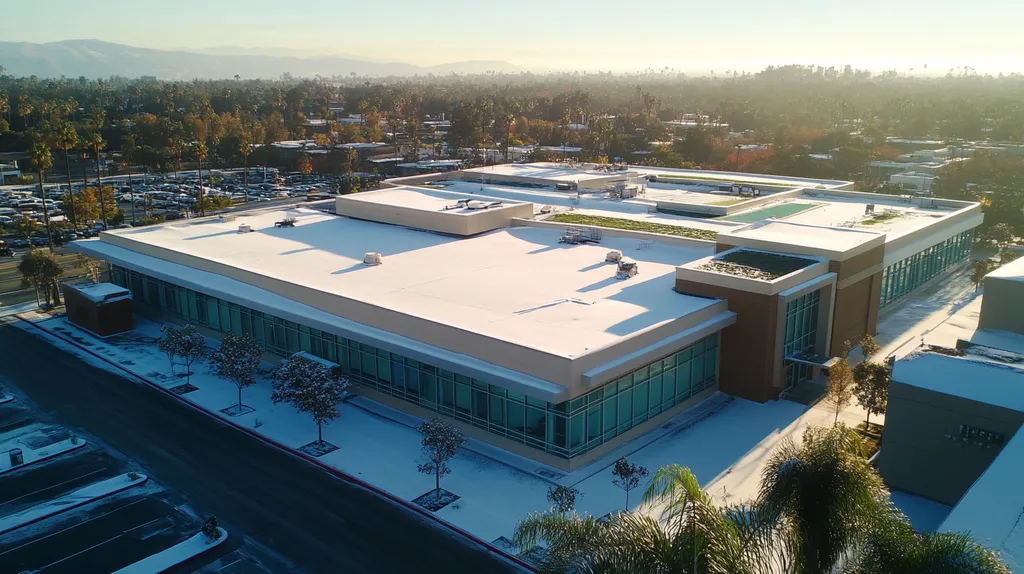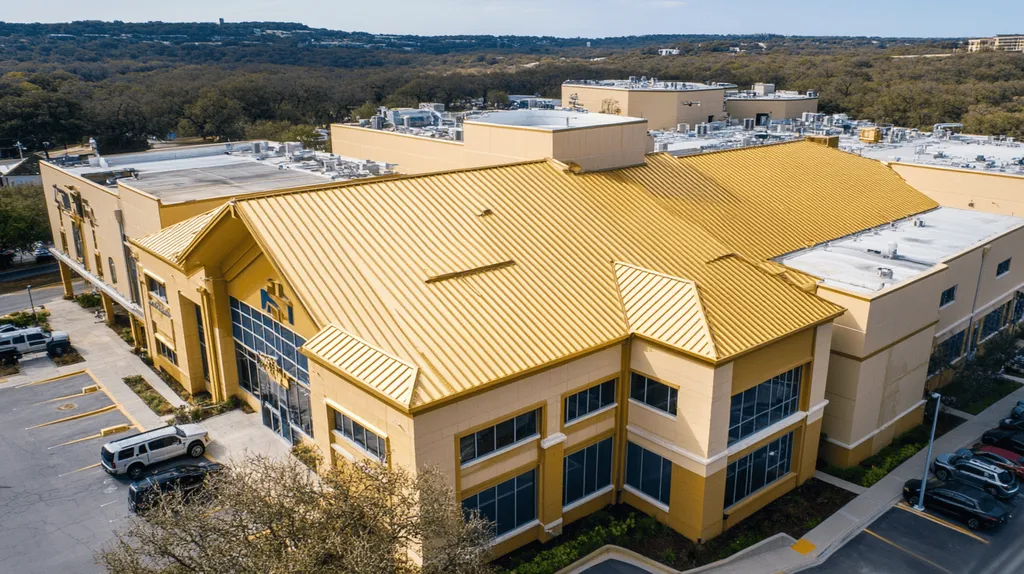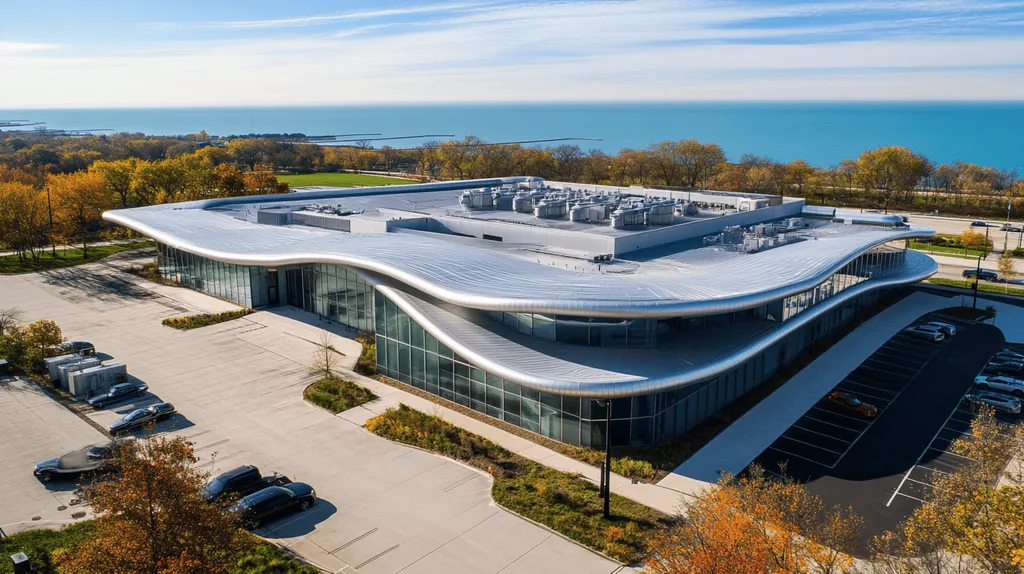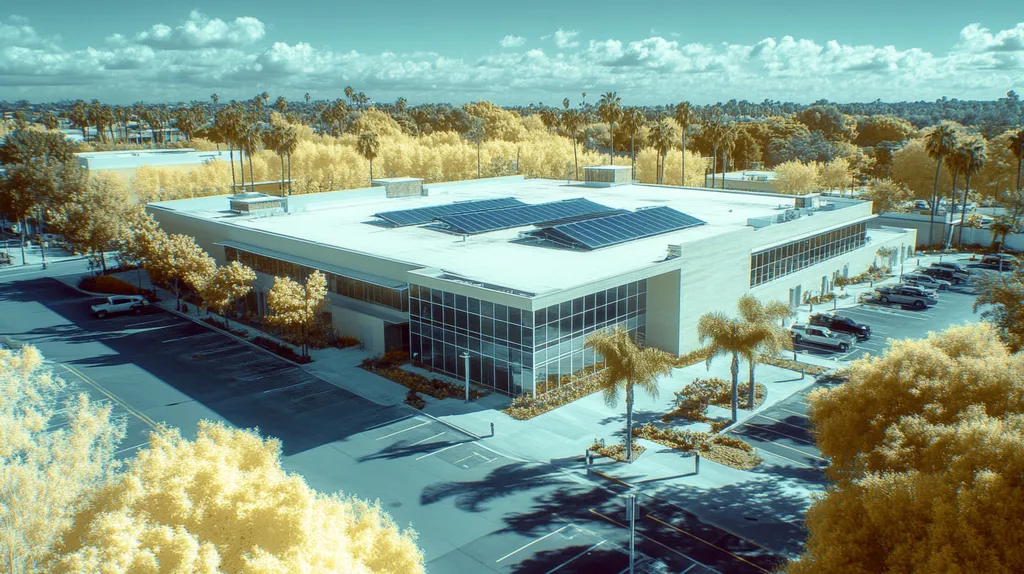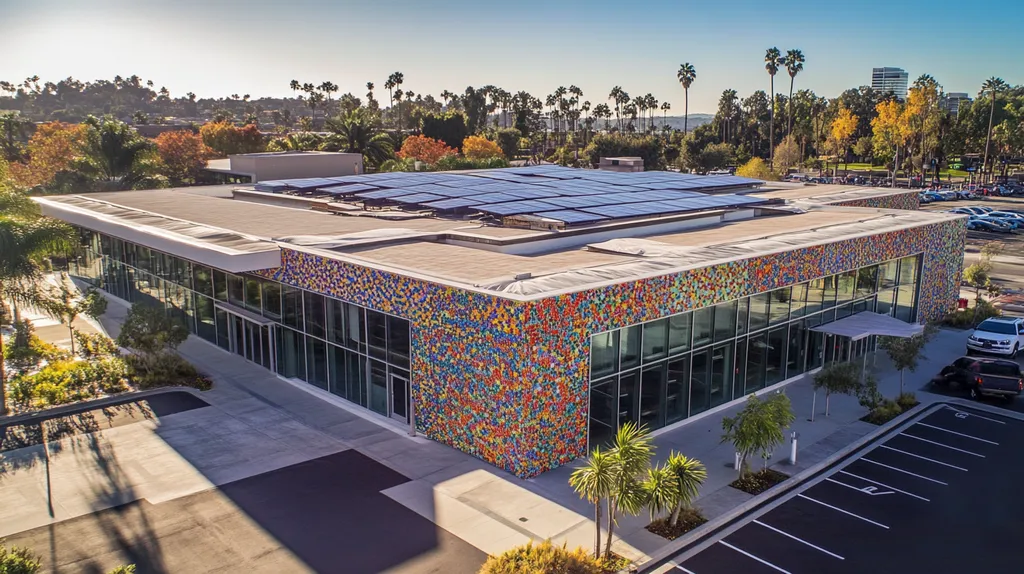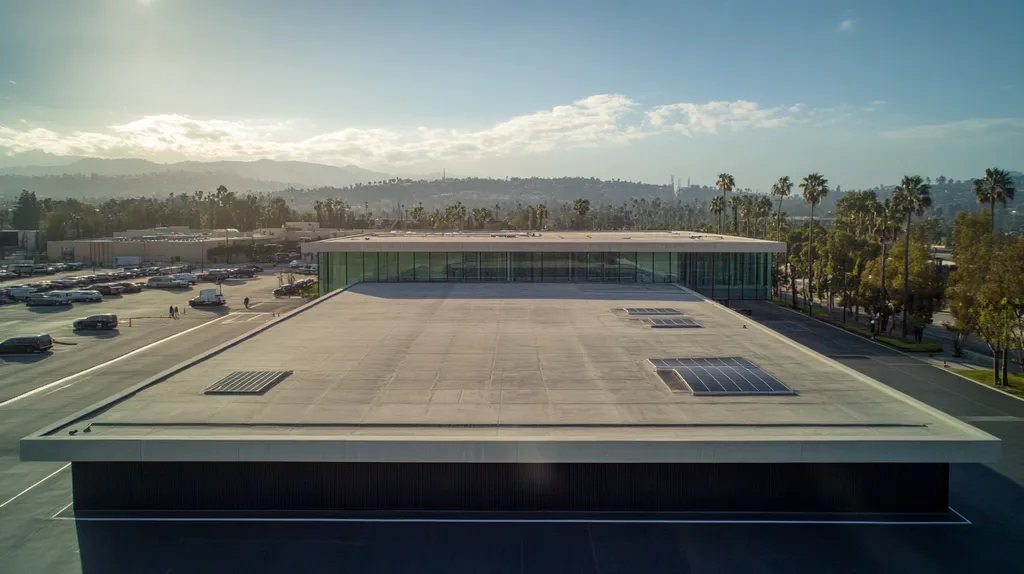Every year, preventable roofing accidents cost the commercial construction industry over $1 billion in medical expenses, lost productivity, and legal settlements. Falls from roofs remain the leading cause of death in construction, with 90% of fatalities involving inadequate safety measures.
For property managers, separating roofing safety facts from fiction isn’t just about compliance—it’s about preventing catastrophic outcomes that can permanently affect businesses and lives.
This comprehensive guide examines common safety misconceptions, their practical implications, and evidence-based solutions that protect both workers and assets while optimizing facility operations.
SECTION 1: COMMON MISCONCEPTIONS
When it comes to commercial roofing safety, misconceptions can have devastating consequences. Safety oversight isn’t just about compliance—it’s about preventing the leading cause of construction fatalities. Property managers who misunderstand crucial safety requirements, repair urgency, or roofing system characteristics put both workers and assets at risk. Let’s examine three critical misconceptions that frequently lead to costly errors and potentially dangerous situations.
Understanding OSHA Regulations
When a roofing fatality occurs due to falls, 90% of cases involve workers without proper fall protection systems in place. This stark reality underscores why treating OSHA regulations as mere guidelines rather than mandatory requirements can have fatal consequences. (source: Dataforma)
Many property managers mistakenly believe that basic safety measures are sufficient for compliance. However, OSHA requirements encompass comprehensive fall protection systems, detailed safety plans, and regular training programs.
The financial implications of non-compliance extend far beyond initial fines. Legal liability, increased insurance premiums, and project delays can multiply costs exponentially.
Regular safety audits and documentation are not optional extras—they’re essential components of a compliant roofing project. Cutting corners on safety requirements inevitably leads to greater expenses and risks.
Leaks and Immediate Replacement
Many property managers rush to complete roof replacement when discovering leaks, assuming it’s the only solution. This reactive approach often results in unnecessary expenses and disruption to building operations.
Professional assessment frequently reveals that targeted repairs can effectively resolve leak issues. These solutions typically cost a fraction of full replacement while providing comparable protection.
Strategic maintenance planning helps identify potential problems before they become emergencies. Regular inspections and preventive repairs extend roof life and optimize facility budgets.
Understanding the difference between necessary replacement and repairable damage enables better financial planning and more effective facility management.
Flat Roofs and Leak Risks
The belief that flat roofs inherently leak more than pitched roofs persists despite advances in commercial roofing technology. Modern flat roof systems incorporate sophisticated drainage designs and waterproofing materials that effectively prevent water infiltration.
Most flat roof failures stem from improper installation or inadequate maintenance rather than design limitations. Regular inspection of drainage systems and seams prevents many common issues.
Professional installation by qualified contractors who understand current flat roof technologies is crucial. Proper material selection and application techniques significantly impact long-term performance.
With appropriate maintenance and installation, flat roofs can provide excellent protection and durability. Understanding these systems’ capabilities helps property managers make informed decisions about roof management.
SECTION 2: PRACTICAL IMPLICATIONS
Safety measures in commercial roofing directly impact both human lives and business operations. Falls remain the leading cause of death in construction, with roofing workers facing a fatality rate 10 times higher than other occupations. For property managers, understanding these practical implications isn’t just about compliance—it’s about preventing catastrophic outcomes that can permanently affect businesses, workers, and building occupants.
Impact on Building Operations
When safety protocols fail during roofing projects, the ripple effects extend far beyond the immediate accident. Emergency responses can force complete building evacuations, disrupting hundreds of occupants and potentially shutting down business operations for days or weeks.
Even minor safety incidents typically trigger mandatory work stoppages and investigations. These interruptions can extend project timelines by weeks, forcing businesses to operate under temporary weather protection or relocate operations entirely.
Safety violations often result in immediate project shutdowns by regulatory authorities. These administrative holds can last indefinitely until full compliance is achieved and documented, creating massive operational disruptions for building tenants.
The financial impact compounds quickly through lost productivity, tenant compensation claims, and emergency mitigation measures. A single serious safety incident can transform a routine roofing project into a major business crisis.
Safety Training for Roofers
Effective safety training requires more than just basic fall protection instruction. Modern commercial roofing demands comprehensive knowledge of equipment operation, material handling, and emergency procedures specific to each building’s unique characteristics.
Training must address both obvious and subtle hazards, from proper ladder positioning to recognizing deteriorated deck conditions. Workers need practical experience with safety equipment under controlled conditions before facing real-world situations.
Regular safety refresher courses keep crews current with evolving best practices and equipment updates. This ongoing education helps prevent complacency and ensures consistent application of safety protocols.
Documentation of all safety training becomes crucial for liability protection and compliance verification. Property managers should maintain detailed records of who received what training and when.
Maintenance Schedules
Regular maintenance inspections serve as both safety audits and performance assessments. These scheduled reviews help identify developing hazards before they create dangerous conditions for maintenance workers or building occupants.
Safety equipment like fall protection anchors requires systematic inspection and recertification. Neglecting these maintenance requirements can invalidate safety systems when they’re needed most.
Weather events can compromise safety features between scheduled maintenance visits. Emergency response protocols should include rapid safety system assessment after severe storms.
Digital maintenance tracking systems help ensure no safety-critical inspections are missed. These platforms can automatically flag approaching certification deadlines and document completion of required safety checks.
SECTION 3: COST OF MISINFORMATION
Misinformation about commercial roofing safety measures creates a devastating financial domino effect. When property managers act on incorrect assumptions about safety protocols, the consequences extend far beyond immediate project costs. Every dollar saved by cutting corners on safety typically results in $4-10 in additional expenses through accidents, delays, and premature system failures. This pattern of escalating costs threatens both immediate operations and long-term facility sustainability.
Financial Consequences of Neglect
Safety-related work stoppages create immediate financial impact through lost productivity and emergency remediation costs. A single safety violation can trigger project delays lasting weeks or months, forcing businesses to operate under temporary protection measures.
Emergency repairs conducted under rushed conditions typically cost 300-400% more than planned maintenance. These reactive solutions often provide only temporary fixes, requiring additional work later.
The ripple effect extends to tenant operations, potentially triggering lease penalties and compensation claims. Multiple tenants experiencing business interruption can quickly generate six-figure losses.
Legal expenses and regulatory fines compound these direct costs. OSHA penalties for willful safety violations can reach $145,027 per incident, not including legal defense costs.
Premature Roof Failure
When safety protocols are compromised, installation quality inevitably suffers. Rushed work and untrained personnel lead to improper material handling, incorrect application techniques, and missed inspection points.
These compromises accelerate system degradation, often reducing roof lifespan by 40-60%. A roof designed to last 20 years may require replacement in just 8-12 years when safety measures are ignored.
Water infiltration from premature failures creates cascading damage to building systems and contents. The cost to repair internal damage often exceeds the price of proper initial installation.
Building owners face significantly higher replacement costs when failures occur outside planned maintenance cycles. Emergency capital expenditures strain budgets and disrupt long-term facility planning.
Insurance and Liability
Insurance carriers increasingly scrutinize safety protocols when evaluating coverage and processing claims. Properties with documented safety violations face premium increases of 25-50% or outright policy cancellation.
Liability exposure extends well beyond worker compensation claims. Third-party lawsuits from injured parties can target both contractors and property owners, with settlements regularly exceeding policy limits.
Many insurance policies now explicitly exclude coverage for incidents involving untrained workers or safety violations. This leaves building owners personally exposed to potentially catastrophic financial losses.
The cost of proper safety measures pales in comparison to potential liability expenses. A comprehensive safety program typically adds 2-3% to project costs while protecting against multi-million dollar exposures.
SECTION 4: REALITY CHECK
Safety in commercial roofing demands a systematic approach built on three fundamental pillars: rigorous inspections, appropriate materials, and adherence to industry standards. With roofing-related falls accounting for nearly one-third of construction fatalities, property managers must understand how these elements work together to protect both workers and investments. The consequences of overlooking any of these pillars can lead to catastrophic failures, injuries, and financial losses that far exceed the cost of proper implementation.
Inspections and Preventative Maintenance
Employers must maintain systematic inspection protocols that include warning line systems, safety monitoring, and proper coverage of skylights and roof openings. These fundamental safety measures form the first line of defense against workplace accidents and injuries. (source: OSHA)
Regular inspections should follow a detailed checklist that includes structural integrity assessment, drainage system evaluation, and membrane condition analysis. These reviews help identify potential hazards before they develop into critical safety issues.
Documentation of all inspections creates a vital safety record that tracks developing problems and verifies compliance. This paper trail proves essential during insurance claims or regulatory reviews.
Preventative maintenance programs must incorporate both scheduled repairs and emergency response protocols. This dual approach ensures immediate attention to safety-critical issues while maintaining long-term system integrity.
Material Selection for Durability
Roofing material choices directly impact worker safety through their durability, slip resistance, and load-bearing capacity. Superior materials reduce maintenance frequency, limiting worker exposure to roof hazards.
High-performance membranes and properly rated underlayments create stable working surfaces for maintenance crews. These materials maintain their integrity longer, reducing the risk of unexpected failures during routine service.
Material compatibility with existing systems affects both installation safety and long-term performance. Proper material selection prevents chemical reactions that could compromise structural integrity.
Weather resistance characteristics determine how often workers must access the roof for repairs. Selecting materials appropriate for local climate conditions reduces unnecessary maintenance exposure.
Industry Standards and Best Practices
Safety standards require specific implementation protocols that go beyond basic fall protection. These include precise measurements for warning lines, proper anchor point installation, and systematic safety monitoring procedures.
Certification requirements for installers and maintenance personnel ensure proper handling of materials and equipment. Regular training updates keep teams current with evolving safety protocols.
Quality control measures must integrate safety checkpoints throughout installation and maintenance processes. These verification steps prevent shortcuts that could compromise worker protection.
Documentation of compliance with industry standards provides crucial legal protection for property managers. Maintaining detailed records of safety measure implementation helps defend against liability claims.
SECTION 5: EVIDENCE-BASED ALTERNATIVES
Commercial roofing safety demands evidence-based solutions that protect both workers and assets. Each year, preventable roofing accidents cost the industry over $1 billion in medical expenses, lost productivity, and legal settlements. Modern approaches combining customized solutions, energy efficiency, and technology can dramatically reduce these risks while improving building performance. Understanding these alternatives helps property managers make informed decisions that enhance safety and operational efficiency.
Customized Roofing Solutions
When a roofing fatality occurs due to falls, 90% of cases involve workers without proper fall protection systems in place. This sobering reality demands customized safety solutions tailored to each building’s unique characteristics and challenges. (source: Dataforma)
Engineered fall protection systems must integrate seamlessly with building architecture and maintenance requirements. These solutions include permanent anchor points, horizontal lifelines, and designated safe zones that protect workers during both installation and ongoing maintenance.
Material selection must account for local climate conditions, building use patterns, and maintenance frequency. Proper matching of materials to application reduces repair frequency and minimizes worker exposure to height-related hazards.
Documentation of customized safety features becomes part of the building’s permanent record. This information guides future maintenance activities and helps ensure consistent application of safety protocols.
Energy Efficiency and Cost Savings
Energy-efficient roofing systems require less frequent maintenance intervention, reducing worker exposure to height-related risks. Modern materials that better regulate building temperature reduce thermal stress and extend system longevity.
Cool roof technologies not only save energy but also create safer working conditions by reducing surface temperatures during maintenance. These materials can lower roof temperatures by up to 50°F, protecting both workers and roofing components.
Proper insulation and ventilation systems prevent moisture accumulation that can create slip hazards and compromise structural integrity. This protection extends roof life while maintaining safe working conditions.
Regular thermal imaging and moisture scanning allow problems to be identified without putting workers at risk. These diagnostic tools support preventive maintenance while minimizing dangerous emergency repairs.
Technology in Roof Management
Digital monitoring systems now provide real-time alerts about potentially dangerous roof conditions. These systems track structural movement, water accumulation, and material degradation without requiring physical inspection.
Drone technology enables comprehensive visual inspections while keeping workers safely on the ground. High-resolution imaging and thermal scanning identify problems before they create hazardous conditions.
Cloud-based management platforms ensure all safety protocols and maintenance records remain instantly accessible. This documentation helps prevent accidents by providing current information about roof conditions and safety requirements.
Mobile applications give maintenance teams immediate access to safety procedures and emergency protocols. This technology ensures workers always have current safety information available when needed.
SECTION 6: TEST AND VERIFY
Testing and verification serve as critical safeguards in commercial roofing, yet studies show that 70% of roof failures stem from inadequate inspection and maintenance protocols. For property managers, establishing rigorous testing procedures isn’t just about protecting assets—it’s about preventing catastrophic failures that can shut down operations and endanger lives. Understanding and implementing proper verification processes creates a foundation for both safety compliance and long-term roof performance.
Conducting Regular Roof Inspections
The standards outline employers’ responsibilities for initiating and maintaining a safety program that provides for frequent and regular inspections of job sites. Warning line systems, proper hole covers, and competent safety monitoring form the foundation of an effective inspection protocol. (source: OSHA)
Comprehensive inspections must include detailed assessment of membrane conditions, seam integrity, and drainage systems. These evaluations help identify potential failure points before they compromise safety or performance.
Weather-related damage requires immediate inspection response. High winds, hail, or heavy snow loads can create hidden structural weaknesses that threaten worker safety.
Digital documentation of all inspections creates a verifiable record of condition assessment and safety compliance. This documentation proves invaluable during insurance claims or regulatory reviews.
Verification of Safety Protocols
Safety protocol verification requires systematic checking of all protective measures, including fall arrest systems, warning lines, and access point controls. Each element must be tested according to manufacturer specifications and regulatory requirements.
Load testing of anchor points and safety equipment must occur at prescribed intervals. This testing ensures that critical safety systems will perform as designed when needed.
Worker certification verification ensures that only properly trained personnel access the roof. Current safety training documentation must be maintained for all authorized personnel.
Emergency response protocols require regular testing and updates. These procedures must account for various scenarios and include clear communication channels.
Warranty and Certification Processes
Warranty validation demands strict adherence to manufacturer-specified inspection and maintenance schedules. Missing or delaying these requirements can void coverage and create liability exposure.
Certification documentation must track both material and installation warranties separately. This distinction becomes crucial when addressing system failures or performance issues.
Third-party verification of installation quality provides additional warranty protection. Independent inspections help ensure that all work meets specified standards.
Regular updates to warranty and certification records protect against future claims disputes. These records should include photographic documentation of all inspections and repairs.
The Bottom Line
With roofing accidents costing the industry over $1 billion annually and 90% of fatalities involving inadequate safety measures, the stakes couldn’t be higher for property managers.
Modern commercial roofing demands a comprehensive approach that integrates customized fall protection, evidence-based maintenance protocols, and advanced monitoring technology.
The cost of proper safety implementation—typically 2-3% of project costs—pales in comparison to the potential liability of $145,027 per OSHA violation, not including legal expenses and insurance implications.
Property managers who embrace systematic safety measures, regular verification processes, and documented compliance protocols protect not just lives but also their facilities’ long-term operational viability and financial health.
FREQUENTLY ASKED QUESTIONS
Q. What are common misconceptions about commercial roof safety?
A. Many property managers believe basic safety measures suffice, risking lives and legal consequences. Misunderstanding OSHA’s comprehensive requirements can lead to costly accidents. Proper fall protection systems and regular audits are imperative for compliance and safety.
Q. How do safety measures impact commercial roof project operations?
A. Inadequate safety measures can cause project shutdowns, disrupting business operations and costing money. Emergency incidents may lead to full evacuations and investigations, extending timelines and increasing expenses. Maintaining strict safety protocols ensures smooth operations and protects tenant interests.
Q. What are the financial costs of misinformation regarding commercial roof safety?
A. Acting on incorrect assumptions often leads to significant financial setbacks, including emergency repair costs. A single safety violation can trigger extensive project delays, increasing expenses dramatically. Legal fees and insurance impacts add to the long-term financial burden.
Q. What are the fundamental pillars of safety in commercial roofing?
A. Safety requires rigorous inspections, proper material selection, and adherence to established industry standards. These factors work together to prevent accidents and protect investments. Overlooking any aspect increases the risk of catastrophic failures and costly repairs.
Q. How can evidence-based alternatives improve roof safety?
A. Evidence-based solutions include customized safety systems and energy-efficient materials that reduce risks. These approaches not only improve worker safety but also enhance roof longevity and building performance. Adopting these methods mitigates costly accidents and operational disruptions.
Q. Why is testing and verification important in commercial roofing?
A. Regular testing and verification are critical to prevent roof failures caused by inadequate maintenance. Comprehensive inspections identify potential hazards early, while verifying safety protocols ensures compliance. This ongoing diligence safeguards both lives and financial investments.
Q. What should property managers consider for roof maintenance schedules?
A. Property managers should establish regular inspection routines to identify potential hazards quickly. Scheduled maintenance, along with documentation of safety protocols, is essential for compliance and risk mitigation. Ongoing evaluation of roof conditions also extends the lifespan of the structure.

